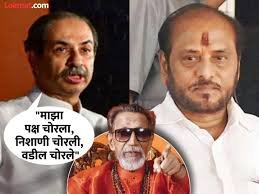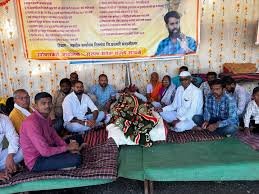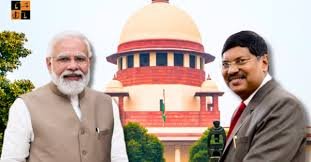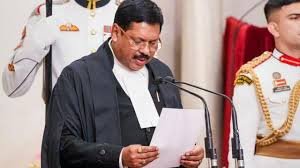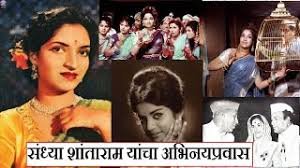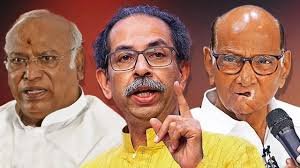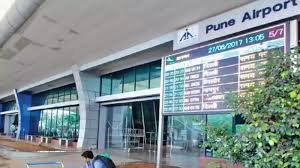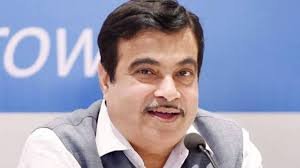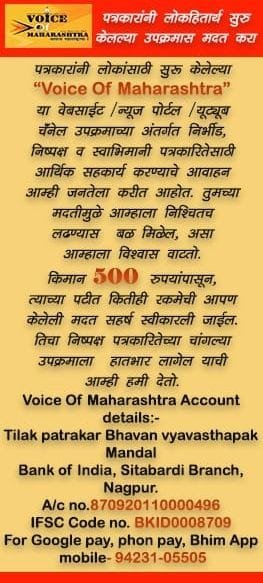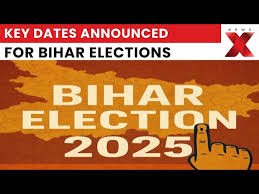
Bihar Assembly 2025: Election dates announced, colorful competition in the political arena; Schedule and five important issues
Patna, October 6, 2025: An important stage in Indian politics, the Bihar Assembly elections, sounded today. The Election Commission has announced the complete schedule of elections for 243 seats of the Assembly, and the voting process will be held in two phases on November 6 and November 11. This election will have a big impact not only on the political future of Bihar, but also on national politics. Political analysts believe that the fight between the currently ruling Grand Alliance (RJD-Congress) and the BJP-Nitish Kumar's Janata Dal (United) NDA will make this election very exciting.
As per the schedule announced by the Election Commission, the nomination process will begin from October 24. The first phase will be held on November 23, which will include 85 assembly constituencies. The second phase will be held on November 30 for 97 constituencies, while the third and final phase will be held on December 5 for the remaining 61 constituencies. The counting of votes will be held on a single day for all the phases, i.e. on December 8. The election process will be held over a period of about a fortnight, in which about 7.6 crore voters will participate. The Election Commission has also announced that special measures have been taken for a Covid-free and transparent process.
This Bihar election is not just about statistics, but also about socio-economic issues. The political atmosphere has heated up due to the development works done in the state in the last few years. The schemes undertaken by the government led by Chief Minister Nitish Kumar in the rural development, education and health sectors have excited the voters. On the other hand, the opposition is attacking the ruling party on issues like unemployment, inflation and farmer problems. At the national level, rallies and campaign rallies of leaders like Prime Minister Narendra Modi and Congress leader Rahul Gandhi will add color to this election.
Five important points need to be known about this election:
1. Voting in two phases: Out of the 243 seats of the Bihar Assembly, voting will be held on November 6 for 85 seats in the first phase, while the second phase will be held on November 11 for 158 seats. The schedule has been decided according to the geographical structure of the state, and police deployment has been increased for safe voting.
2. About 7.6 crore voters: The state's electorate includes 3.8 crore women, making the 'women's vote' a decisive factor in the election. The Election Commission has launched the 'virtual voting' facility for the first time and has made e-voting an option available for overseas voters.
3. Major political alliances: The main fight will be between the ruling NDA (BJP-JDU) and the grand alliance (RJD-Congress). Also, the influence of the BSP and other small parties cannot be ignored. In the last election (2020), the NDA had won 125 seats, while the grand alliance got 110 seats.
4. Issue of development and welfare schemes: The election will be campaigned on central government schemes like 'Har Ghar Jal Yojana', 'Ujjwala Yojana' and 'Pradhan Mantri Awas Yojana'. The opposition, however, will try to corner the ruling party on Bihar's unemployment rate (14.5%) and inflation.
5. Use of technology: The Election Commission has made the process more transparent by using technology like e-nomination, WhatsApp alerts and drone inspection of polling stations. Also, special monitoring will be kept on social media to prevent fake news.
This election is not only political for Bihar, but also about social transformation. The share of Dalit, Muslim and OBC voters in the state will be the deciding factor in the election. Although the political tide has changed after Nitish Kumar's alliance with the BJP after the last election, it will be exciting to see what the voters decide this time. The atmosphere has been heated due to the statements of leaders during the election campaign, and there are also controversies over intra-party factionalism and candidate selection.
Patna, October 6, 2025: An important stage in Indian politics, the Bihar Assembly elections, sounded today. The Election Commission has announced the complete schedule of elections for 243 seats of the Assembly, and the voting process will be held in two phases on November 6 and November 11. This election will have a big impact not only on the political future of Bihar, but also on national politics. Political analysts believe that the fight between the currently ruling Grand Alliance (RJD-Congress) and the BJP-Nitish Kumar's Janata Dal (United) NDA will make this election very exciting.
As per the schedule announced by the Election Commission, the nomination process will begin from October 24. The first phase will be held on November 23, which will include 85 assembly constituencies. The second phase will be held on November 30 for 97 constituencies, while the third and final phase will be held on December 5 for the remaining 61 constituencies. The counting of votes will be held on a single day for all the phases, i.e. on December 8. The election process will be held over a period of about a fortnight, in which about 7.6 crore voters will participate. The Election Commission has also announced that special measures have been taken for a Covid-free and transparent process.
This Bihar election is not just about statistics, but also about socio-economic issues. The political atmosphere has heated up due to the development works done in the state in the last few years. The schemes undertaken by the government led by Chief Minister Nitish Kumar in the rural development, education and health sectors have excited the voters. On the other hand, the opposition is attacking the ruling party on issues like unemployment, inflation and farmer problems. At the national level, rallies and campaign rallies of leaders like Prime Minister Narendra Modi and Congress leader Rahul Gandhi will add color to this election.
Five important points need to be known about this election:
1. Voting in two phases: Out of the 243 seats of the Bihar Assembly, voting will be held on November 6 for 85 seats in the first phase, while the second phase will be held on November 11 for 158 seats. The schedule has been decided according to the geographical structure of the state, and police deployment has been increased for safe voting.
2. About 7.6 crore voters: The state's electorate includes 3.8 crore women, making the 'women's vote' a decisive factor in the election. The Election Commission has launched the 'virtual voting' facility for the first time and has made e-voting an option available for overseas voters.
3. Major political alliances: The main fight will be between the ruling NDA (BJP-JDU) and the grand alliance (RJD-Congress). Also, the influence of the BSP and other small parties cannot be ignored. In the last election (2020), the NDA had won 125 seats, while the grand alliance got 110 seats.
4. Issue of development and welfare schemes: The election will be campaigned on central government schemes like 'Har Ghar Jal Yojana', 'Ujjwala Yojana' and 'Pradhan Mantri Awas Yojana'. The opposition, however, will try to corner the ruling party on Bihar's unemployment rate (14.5%) and inflation.
5. Use of technology: The Election Commission has made the process more transparent by using technology like e-nomination, WhatsApp alerts and drone inspection of polling stations. Also, special monitoring will be kept on social media to prevent fake news.
This election is not only political for Bihar, but also about social transformation. The share of Dalit, Muslim and OBC voters in the state will be the deciding factor in the election. Although the political tide has changed after Nitish Kumar's alliance with the BJP after the last election, it will be exciting to see what the voters decide this time. The atmosphere has been heated due to the statements of leaders during the election campaign, and there are also controversies over intra-party factionalism and candidate selection.
As per the schedule announced by the Election Commission, the nomination process will begin from October 24. The first phase will be held on November 23, which will include 85 assembly constituencies. The second phase will be held on November 30 for 97 constituencies, while the third and final phase will be held on December 5 for the remaining 61 constituencies. The counting of votes will be held on a single day for all the phases, i.e. on December 8. The election process will be held over a period of about a fortnight, in which about 7.6 crore voters will participate. The Election Commission has also announced that special measures have been taken for a Covid-free and transparent process.
This Bihar election is not just about statistics, but also about socio-economic issues. The political atmosphere has heated up due to the development works done in the state in the last few years. The schemes undertaken by the government led by Chief Minister Nitish Kumar in the rural development, education and health sectors have excited the voters. On the other hand, the opposition is attacking the ruling party on issues like unemployment, inflation and farmer problems. At the national level, rallies and campaign rallies of leaders like Prime Minister Narendra Modi and Congress leader Rahul Gandhi will add color to this election.
Five important points need to be known about this election:
1. Voting in two phases: Out of the 243 seats of the Bihar Assembly, voting will be held on November 6 for 85 seats in the first phase, while the second phase will be held on November 11 for 158 seats. The schedule has been decided according to the geographical structure of the state, and police deployment has been increased for safe voting.
2. About 7.6 crore voters: The state's electorate includes 3.8 crore women, making the 'women's vote' a decisive factor in the election. The Election Commission has launched the 'virtual voting' facility for the first time and has made e-voting an option available for overseas voters.
3. Major political alliances: The main fight will be between the ruling NDA (BJP-JDU) and the grand alliance (RJD-Congress). Also, the influence of the BSP and other small parties cannot be ignored. In the last election (2020), the NDA had won 125 seats, while the grand alliance got 110 seats.
4. Issue of development and welfare schemes: The election will be campaigned on central government schemes like 'Har Ghar Jal Yojana', 'Ujjwala Yojana' and 'Pradhan Mantri Awas Yojana'. The opposition, however, will try to corner the ruling party on Bihar's unemployment rate (14.5%) and inflation.
5. Use of technology: The Election Commission has made the process more transparent by using technology like e-nomination, WhatsApp alerts and drone inspection of polling stations. Also, special monitoring will be kept on social media to prevent fake news.
This election is not only political for Bihar, but also about social transformation. The share of Dalit, Muslim and OBC voters in the state will be the deciding factor in the election. Although the political tide has changed after Nitish Kumar's alliance with the BJP after the last election, it will be exciting to see what the voters decide this time. The atmosphere has been heated due to the statements of leaders during the election campaign, and there are also controversies over intra-party factionalism and candidate selection.

.jpg)






